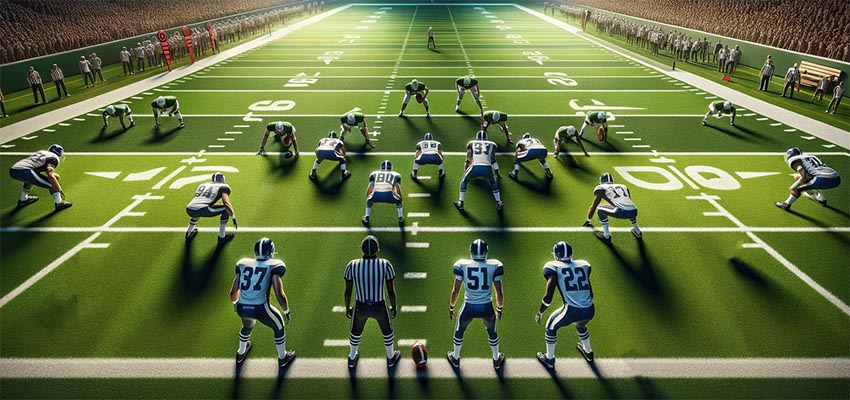The American Football Shotgun Formation is a cornerstone of modern football strategy. It has reshaped the game from thrilling deep passes to rapid no-huddle offenses.
In this comprehensive guide, we dive into the intricacies of the shotgun formation, exploring its history, key variations, player roles, and strategic considerations.
Whether you’re a die-hard football fan or a newcomer to the sport, this post will equip you with a deeper understanding of this dynamic formation and how it impacts the game’s strategy. So, stay sharp and read the post till the end.
What Is American Football Shotgun Formation?
The shotgun formation is a popular offensive formation in American football, primarily used by the team on offense. In this formation, the quarterback lines up several yards behind the line of scrimmage rather than directly under center.
The primary characteristic of the shotgun formation is that the quarterback receives the snap from the center while standing a few yards back, typically about 5-7 yards behind the line of scrimmage.
This extra distance between the quarterback and the line of scrimmage gives the quarterback more time and space to read the defense, make decisions, and set up to pass the ball.
The shotgun formation has become increasingly popular in modern American football due to its advantages in the passing game.
It allows quarterbacks to operate more efficiently and has developed a wide range of passing concepts and plays.
Types of American Football Shotgun Formation
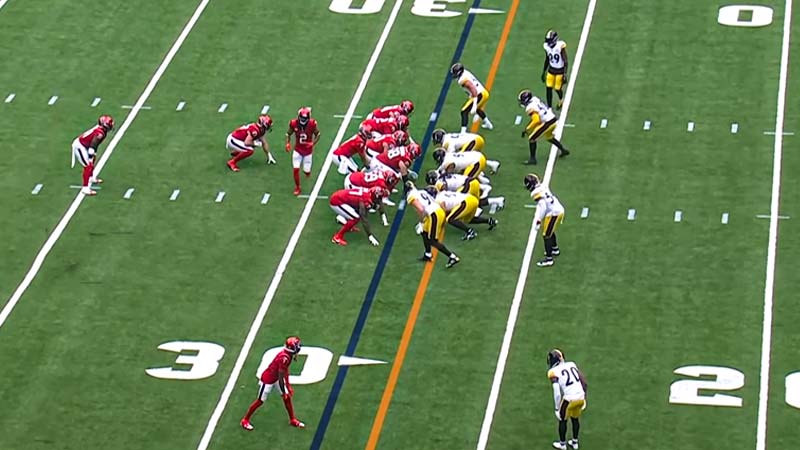
Several variations of the shotgun formation in American football are designed to suit different offensive strategies and objectives.
Here are some of the most common types of shotgun formations:
Singleback Shotgun Formation
In this formation, a single running back is lined up next to the quarterback in the backfield.
It’s a balanced formation that allows for both passing and running plays. The running back can take handoffs or stay in to block for pass protection.
Empty Backfield Shotgun
There are no running backs in the backfield in this formation, and the quarterback is alone in the shotgun.
This formation is often used in passing situations, and it spreads the field with multiple wide receivers and tight ends, creating more passing options.
Shotgun Trips Formation
In this formation, three wide receivers are grouped to one side of the line of scrimmage, usually called the trips side.
This variation of the shotgun formation provides the quarterback with a strong passing option on one side of the field while maintaining balance.
Pistol Formation
The pistol formation is a hybrid between the shotgun and the traditional under-center formations.
The quarterback lines up a few yards behind the center in the pistol but closer than in a standard shotgun formation. This formation allows for a better balance between passing and running plays.
Wildcat Formation
The wildcat is a variation of the shotgun formation that often features a non-quarterback player, such as a running back or wide receiver, taking the snap.
It’s designed to add an element of surprise and versatility to the offense and can involve direct snaps to the non-quarterback player for running or passing plays.
Double Shotgun Formation
The double shotgun has two shotgun formations on the field, with two quarterbacks lined up side by side. This formation is rare but can be used for trick plays, deception, or to give the offense multiple passing options.
Shotgun Spread Formation
The shotgun spread formation is an offensive alignment that emphasizes spreading the field with multiple wide receivers and often features an empty backfield. It’s designed to create mismatches and exploit weaknesses in the defense.
Jumbo Shotgun Formation
This formation includes multiple tight ends and/or fullbacks in addition to the running back in the shotgun. It’s often used in short-yardage or goal-line situations when the offense wants to establish a strong running presence.
These are just a few examples of the many variations of the shotgun formation in American football.
Teams use these formations strategically based on their offensive strengths, the situation in the game, and the weaknesses they want to exploit in the opposing defense.
Player Roles and Responsibilities in Football Shotgun Formation
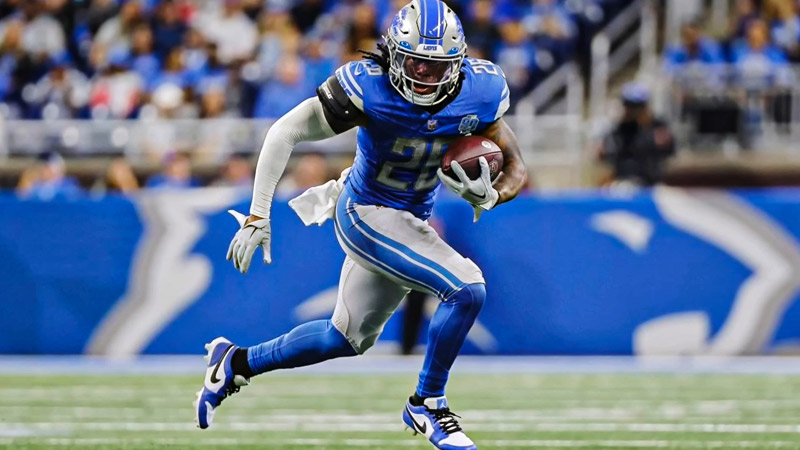
In the shotgun formation in American football, each player on the offensive unit has specific roles and responsibilities.
Here are the key player roles and responsibilities in the shotgun formation:
Quarterback (QB)
- The quarterback is the offense’s leader and is responsible for receiving the snap and making decisions quickly.
- Reads the defense to determine whether to pass, hand off to a running back, or keep the ball for a run option.
- Executes passes accurately to targeted receivers, makes audibles, and manages the game.
Running Back (RB)
- The running back may line up beside the quarterback or shift to the side for pass protection.
- Executes running plays if handed the ball or provides pass protection for the quarterback.
- Can also be an eligible receiver on passing plays.
Wide Receivers (WR)
- Wide receivers are positioned on the line of scrimmage and are primary targets for pass receptions.
- Run precise routes, create separation from defenders, and catch passes.
- Block for running plays when necessary.
Tight End (TE)
- The tight end lines up on the line of scrimmage and is versatile in both blocking and receiving.
- May block for running plays, run pass routes, and serve as an additional option for the quarterback.
Offensive Line (OL)
- The offensive line consists of the center, guards, and tackles.
- Protects the quarterback from the pass rush by blocking defenders.
- Creates running lanes for the running back during rushing plays.
Center (C)
- The center snaps the ball to the quarterback to initiate the play.
- Must make accurate snaps and provide pass protection or blocking support.
Fullback (FB) or H-Back (if used)
- Positioned in the backfield or as an H-back, a fullback may block for the running back or serve as a short-yardage receiver.
- Provides additional pass protection and blocking support.
Each player in the shotgun formation has a specific role and set of responsibilities based on the play called by the coaching staff and the situation on the field.
Strategic Considerations in Football Shotgun Formation
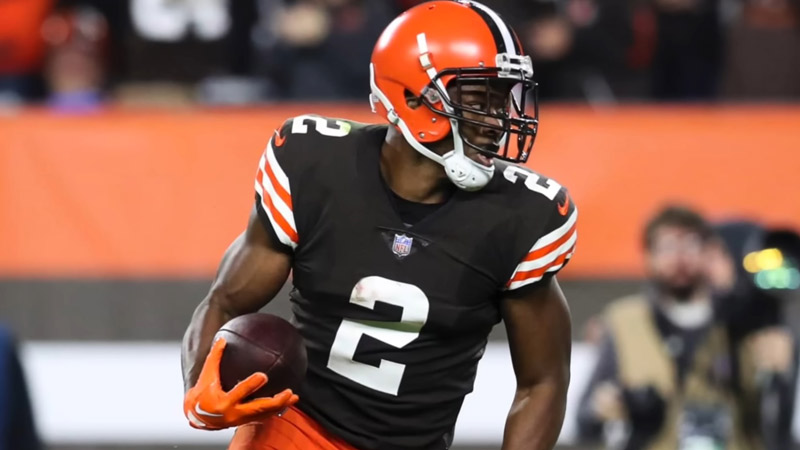
Strategic considerations in the football shotgun formation are crucial for success on offense.
Coaches and players must make decisions based on various factors to maximize their chances of moving the ball down the field and scoring. Here are some key strategic considerations in the shotgun formation:
Passing vs. Running Balance
Coaches must decide whether to emphasize passing or running plays based on the strengths of their team, the opposing defense, and the game situation.
The shotgun formation allows for both, but the balance can vary.
Protection Scheme
Pass protection is vital when using the shotgun formation, as the quarterback is deeper in the backfield and exposed to pass rushers.
Coaches must design protection schemes to keep the quarterback safe while allowing time for passing plays to develop.
Route Concepts
Designing effective route combinations is essential. Coaches and quarterbacks need to coordinate the movements of wide receivers and tight ends to exploit the defense’s weaknesses and create open passing lanes.
Pre-Snap Reads
Quarterbacks must make pre-snap reads to identify the defensive alignment and potential blitzes.
This information can dictate which side of the field to favor, where to look for mismatches, and when to change the play call (audible).
Audibles and Adjustments
The shotgun formation allows quarterbacks to make audibles (changing the play at the line of scrimmage) more easily.
Recognizing defensive alignments and making quick adjustments based on those reads can lead to more successful plays.
Down and Distance Considerations
The choice of plays in the shotgun formation depends on the down and distance. On third and long, teams may prioritize passing plays to gain a first down, while on short-yardage situations, they may run the ball.
Clock Management
Managing the game clock is crucial, particularly in late-game situations.
Teams in the shotgun formation should consider the time left in the game, the number of timeouts, and whether to hurry up or slow down the pace of play.
These strategic considerations involve the interplay of player skills, coaching decisions, and game circumstances.
When to Use Football Shotgun Formation?
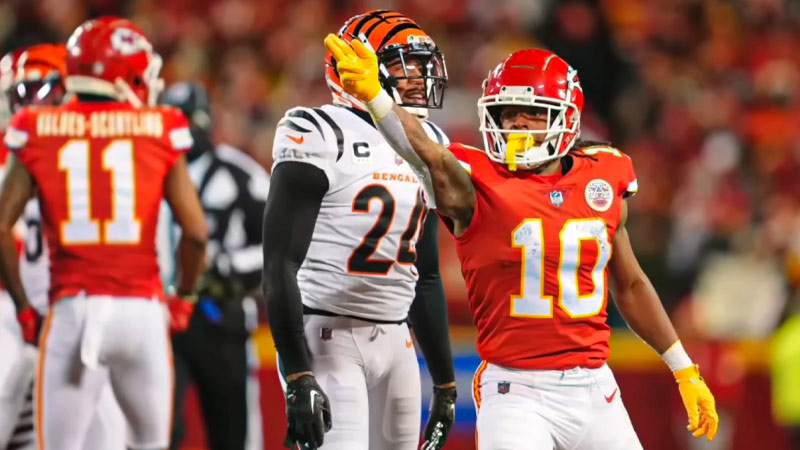
The football shotgun formation is used strategically in various situations to take advantage of its benefits. Here are some key situations in which teams often opt to use the shotgun formation:
Passing Situations
The shotgun formation is frequently employed in obvious passing situations, such as third-and-long or when a team is trailing late in a game.
The extra distance between the quarterback and the line of scrimmage allows for a quicker setup and improved vision, facilitating the passing game.
Quick-Paced Offense
Teams looking to run a fast-paced, up-tempo offense often favor the shotgun formation.
The quarterback’s position and the ease of running no-huddle plays make it ideal to maintain a high tempo and keep the defense off-balance.
Spread Offense
The shotgun formation is a fundamental component of spread offenses, where teams aim to spread the field with multiple wide receivers and create mismatches against defenders.
This alignment is effective for quick passes and exploiting one-on-one matchups.
Play-Action Passing
Teams may use the shotgun formation when incorporating play-action passes into their game plan.
The deep snap can simulate a running play, freezing linebackers and safeties and allowing for big passing plays downfield.
RPO (Run-Pass Option) Plays
The shotgun formation is commonly used in run-pass option (RPO) plays, where the quarterback can hand off to a running back or pass the ball based on the defense’s reaction.
The extra space allows the quarterback to make these quick decisions.
Versatility and Deception
The shotgun formation offers flexibility and can be used for various offensive strategies.
Teams can run the ball, execute misdirection plays, or employ trick plays, adding an element of surprise and deception to their offense.
Goal-Line and Short-Yardage Situations
In certain short-yardage or goal-line situations, teams may use the shotgun formation to spread the defense out and create more running lanes for the ball carrier, allowing for a higher likelihood of success in these tight situations.
The choice to use the shotgun formation is influenced by a team’s offensive philosophy, the skills of the quarterback, and the specific game situation.
FAQs
What is the main advantage of the shotgun formation in American football?
The main advantage of the shotgun formation is that it provides the quarterback with extra time and improved field vision for passing plays.
This formation is particularly effective in passing situations and allows for quick decision-making.
Can teams run the ball effectively from the shotgun formation?
Yes, teams can run the ball effectively from the shotgun formation.
By incorporating run-pass options (RPOs) and using running backs strategically, the shotgun formation allows for both running and passing plays, maintaining a balanced offense.
When is the shotgun formation typically used in football games?
The shotgun formation is typically used in passing situations, quick-paced offenses spread formations, and when teams are looking to exploit mismatches in the defense.
It’s also commonly used in third-and-long scenarios and in no-huddle or up-tempo offenses.
What’s the difference between the shotgun and pistol formations?
While both formations position the quarterback a few yards behind the line of scrimmage, the pistol formation places the quarterback closer to the line compared to the shotgun.
This balances passing and running plays, whereas the shotgun often prioritizes passing.
Are there any drawbacks to using the shotgun formation in football?
One drawback is that it can limit the effectiveness of traditional running plays due to the distance between the quarterback and the line of scrimmage.
Additionally, it can make it harder for the offense to maintain ball security in adverse weather conditions.
Wrapping Up
In the ever-evolving world of American football, the shotgun formation is a symbol of innovation and adaptability.
Positioning the quarterback a few yards behind the line of scrimmage has revolutionized how teams approach the game, offering a versatile platform for passing and running plays.
As we conclude our exploration, it’s evident that shotgun formation is more than just an offensive alignment; it’s a dynamic strategy that shapes the game’s tempo, tactics, and excitement.
Whether you’re a coach strategizing for the next big game or a fan dissecting plays, this knowledge of shotgun formation will enhance your appreciation of the sport and its evolving strategies. Thank you so much.

